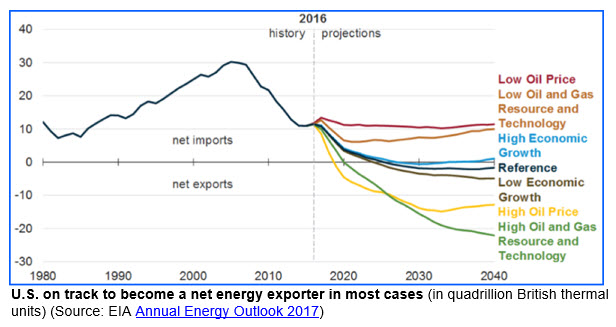WASHINGTON, Jan. 12, 2017 - In his final days in the White House, President Obama clearly is determined to do whatever he can to make sure renewable energy continues on its current growth path.
In an academic-style analysis published this week in Science magazine optimistically titled “The Irreversible Momentum of Clean Energy,” Obama writes that he is “confident that trends toward a clean-energy economy that have emerged during my presidency will continue and that the economic opportunity for our country to harness that trend will only grow.”
In an apparent response to President-elect Trump’s promises to create jobs and economic growth by accelerating fossil fuel production and use, Obama insists that “any economic strategy that ignores carbon pollution will impose tremendous costs to the global economy and will result in fewer jobs and less economic growth over the long term” and that “the trend toward a cleaner power sector can be sustained regardless of near-term federal policies.”
In his scholarly, footnoted article, Obama notes that the U.S. economy has continued to grow while carbon emissions have been reduced. “This ‘decoupling’ of energy sector emissions and economic growth should put to rest the argument that combatting climate change requires accepting lower growth or a lower standard of living,” the president says. He adds that although substantial investments are needed to reduce emissions and mitigate climate change impacts, these investments “will be modest in comparison with the benefits from avoided climate-change damages.” He says that without continued action, damages could include “lost U.S. federal revenue of roughly $340 billion to $690 billion annually.”
Calling for an end to “the nearly $5 billion per year in federal fossil-fuel subsidies,” Obama concludes that “technology advances and market forces will continue to drive renewable deployment,” and that “it is unlikely that utilities will change course and choose to build coal-fired power plants, which would be more expensive than natural gas plants, regardless of any near-term changes in federal policy.”
Obama predicts that “beyond market forces, state-level policy will continue to drive clean-energy momentum. States representing 40 percent of the U.S. population are continuing to move ahead with clean-energy plans, and even outside of those states, clean energy is expanding.”
The Department of Energy is also making the case that it’s economic common sense to invest in renewable energy. In a 38-page report released this week on “Transmission Expansion in a Wind Vision Future,” DOE concludes that generating 20 percent of U.S. electricity by 2030 and 35 percent by 2050 using renewable energy “is achievable and would provide significant economic, energy security, and health benefits to the nation.”
The DOE report finds that “utility grids can reliably operate with more than 35 percent wind energy and 12 percent solar energy.” This conclusion is also supported by DOE’s second Quadrennial Energy Review (QER) analysis released last week, “Transforming the Nation's Electricity System.” The report predicts that through 2040, “Variable renewables (wind and solar) capacity is expected to increase throughout the entire time period.”
The QER concludes that continuing current clean energy research and development programs “can drive significant emissions reductions” and “can double the projected emissions reductions by 2040.” It adds that increasing R&D investment could triple emissions reductions by 2040.
Still, it appears uncertain that the incoming Trump administration will support the increased clean energy investment that DOE recommends.
China, however, may not need any recommendation. The Ohio-based Institute for Energy Economics and Financial Analysis (IEEFA) released a report last week, “China’s Global Renewable Energy Expansion,” that shows China dominating global investment in clean energy. For 2015, China invested $102.9 billion (up 17 percent from 2014), more than the combined investment by the next three biggest investors: U.S. ($44.1 billion, up 19 percent), Japan ($36.2 billion, up 0.1 percent), and Britain ($22.2 billion, up 25 percent).
Do you find the information on Agri-Pulse helpful? See even more ag, rural policy and energy news when you sign up for a four-week free trial Agri-Pulse subscription.
China’s National Energy
Administration announced last week that in order for renewable energy to
provide 15 percent of China’s energy needs by 2020 and 20 percent by 2030,
creating 13 million clean energy jobs, China will invest an additional $360
billion in renewables by 2020.
With or without added clean-energy investments, the U.S. Energy Information Administration (EIA) sees the U.S. on track to become a net energy exporter by 2026 after being a net importer since 1953. In its Annual Energy Outlook 2017 (AEO) released last week, EIA said the major drivers of the change are increasing production due to hydraulic fracturing (fracking) and relatively flat U.S. consumption thanks to new fuel economy and energy efficiency programs.
In the graph above, EIA projects when the U.S. will become a net exporter of energy under a number of different scenarios. It shows the switch to exports exceeding imports could come as early as 2020 and hit the highest export levels in the case where new oil and gas discoveries and technology advances “combine to produce oil and natural gas at lower prices.”
#30
For more news, go to: www.Agri-Pulse.com